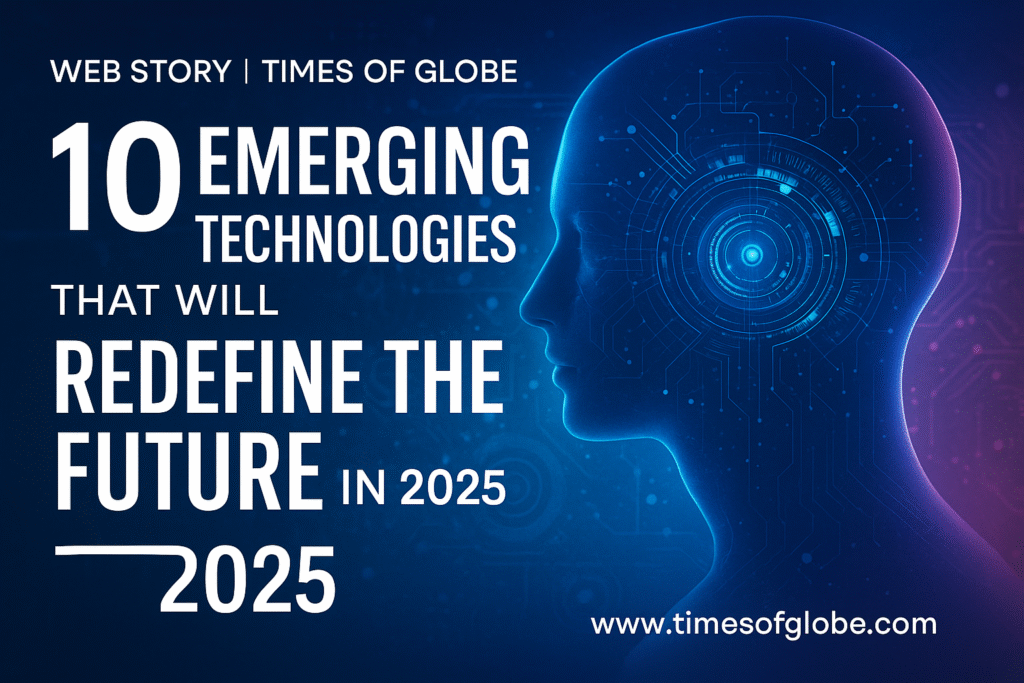Introduction
Technological advancement is accelerating, and 2025 is shaping up to be a pivotal year. From artificial intelligence to quantum computing, a wave of emerging technologies is poised to disrupt and redefine how we work, communicate, and live. This article explores the top 10 emerging technologies expected to reshape the world in 2025 and beyond.
1. Artificial General Intelligence (AGI)
AGI represents the next leap in AI technology, with machines capable of performing any intellectual task that a human can. Unlike current AI systems focused on narrow tasks, AGI will enable machines to think, reason, and make decisions autonomously across various domains.
Benefits:
- Advanced decision-making
- Cross-industry automation
- Real-time multi-domain learning
Industries Impacted:
- Healthcare
- Defense
- Education
2. Quantum Computing
Quantum computers are set to revolutionize problem-solving by leveraging quantum bits (qubits). Companies like IBM and Google are racing to achieve quantum supremacy, enabling unparalleled processing power.
Applications:
- Drug discovery
- Weather forecasting
- Cryptography
3. Neural Interface Technology
Neuralink and similar ventures are building brain-computer interfaces (BCIs) to connect human brains with external devices. This technology holds promise for restoring mobility in paralyzed individuals and even enhancing cognitive abilities.
Future Possibilities:
- Telepathic communication
- Memory backup
- Human-machine symbiosis
4. CRISPR and Gene Editing
CRISPR-Cas9 technology is transforming healthcare by enabling precise editing of DNA. In 2025, we expect CRISPR-based therapies for conditions like cancer, sickle cell anemia, and blindness to move toward mainstream use.
Impact:
- Personalized medicine
- Disease eradication
- Agricultural revolution
5. Smart Materials
Self-healing concrete, shape-shifting polymers, and light-reactive fabrics are some examples of smart materials gaining momentum. These materials react to environmental stimuli and adapt their properties accordingly.
Use Cases:
- Aerospace engineering
- Wearable tech
- Sustainable architecture
6. Green Hydrogen Energy
As nations push for net-zero emissions, green hydrogen, produced using renewable energy, is emerging as a clean fuel alternative. It’s set to play a vital role in powering vehicles, industries, and even entire cities.
Advantages:
- Zero emissions
- Versatile fuel source
- Long storage capacity
7. Space-Based Solar Power
Collecting solar energy in space and transmitting it to Earth is no longer just science fiction. By 2025, pilot projects by NASA and China are expected to demonstrate real-world feasibility.
Key Benefits:
- 24/7 solar collection
- No atmospheric loss
- Renewable revolution
8. Autonomous Aerial Vehicles (AAVs)
Flying cars and delivery drones are set to go mainstream. AAVs promise to redefine urban mobility and logistics, reducing congestion and increasing speed.
Expected Features:
- AI-controlled navigation
- Electric propulsion
- Vertical takeoff and landing (VTOL)
9. Synthetic Biology
This involves designing and engineering biological parts for useful purposes. From lab-grown meat to biodegradable plastics, synthetic biology is driving sustainable innovation.
Future Developments:
- Eco-friendly manufacturing
- Food security
- Living sensors
10. Digital Twins
Digital twins are virtual replicas of real-world systems. These simulations enable predictive maintenance, process optimization, and training across various sectors.
Key Industries:
- Manufacturing
- Healthcare
- Smart cities
Conclusion
2025 is not just another year—it’s a milestone in technological evolution. These 10 emerging technologies are more than innovations; they’re catalysts for a transformed world. Businesses, governments, and individuals must prepare to adapt, adopt, and thrive.
Internal Links:
External Links:

